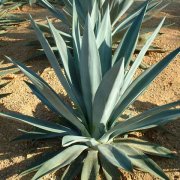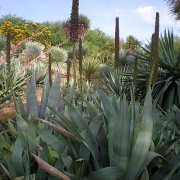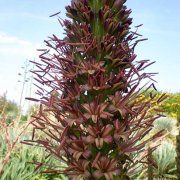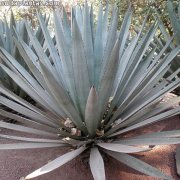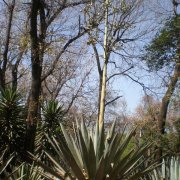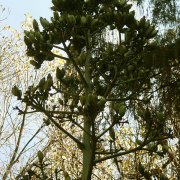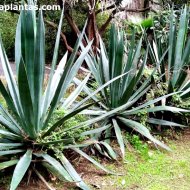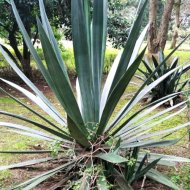Care of the succulent plant Agave sisalana or Sisal |
|
The Agave genus, a subfamily of the Agavoideae, comprises some 300 species of succulent plants native to Mexico, Central America and the Southwest of the USA. Some species are: Agave sisalana, Agave vivipiara, Agave palmeri, Agave striata, Agave shawii, Agave potatorum, Agave parryi, Agave parrasana, Agave macroacantha, Agave filifera, Agave guadalajarana, Agave impressa, Agave bracteosa, Agave attenuata, Agave americana, Agave stricta, Agave victoria-reginae, Agave angustifolia, Agave vilmoriniana, Agave univittata, Agave lechuguilla, Agave ferdinandi-regis, Agave datylio, Agave deserti, Agave chiapensis. Common name: Sisal. This species is native to Yucatan, Mexico. They are succulent plants with a short stem that is usually hidden by the large rosette with fleshy, straight, long leaves (almost 2 meters/6.56 feet) and dark green in color; they are convex on the underside and concave on the upper side and have a dark spine on the tip. The central floral stem can be up to 6 meters (19.68 feet) high and produces greenish flowers that later fall, giving rise to small bulbs that will allow us to multiply the plant. They bloom in summer. Sisal is used industrially to extract the fiber called sisal; It is also used in Mediterranean climate gardens in rockeries or to form groups of succulent plants. Agave sisalana needs exposure to full sun and high temperatures. The soil should contain organic matter but very well drained with plenty of coarse sand. Irrigation will be scarce all year; in winter they are removed if the plant is directly on the ground. Agave sisalana does not need pruning or fertilization. Their worst enemy is excess watering that can rot the plant. Agave sisalana propagates from the lateral rosettes produced by the plant itself or from the bulbils mentioned above. |
Images of the succulent plant Agave sisalana or Sisal |
Find plants
Agave sisalana or Sisal | Care and Growing
© 2025 FavThemes
